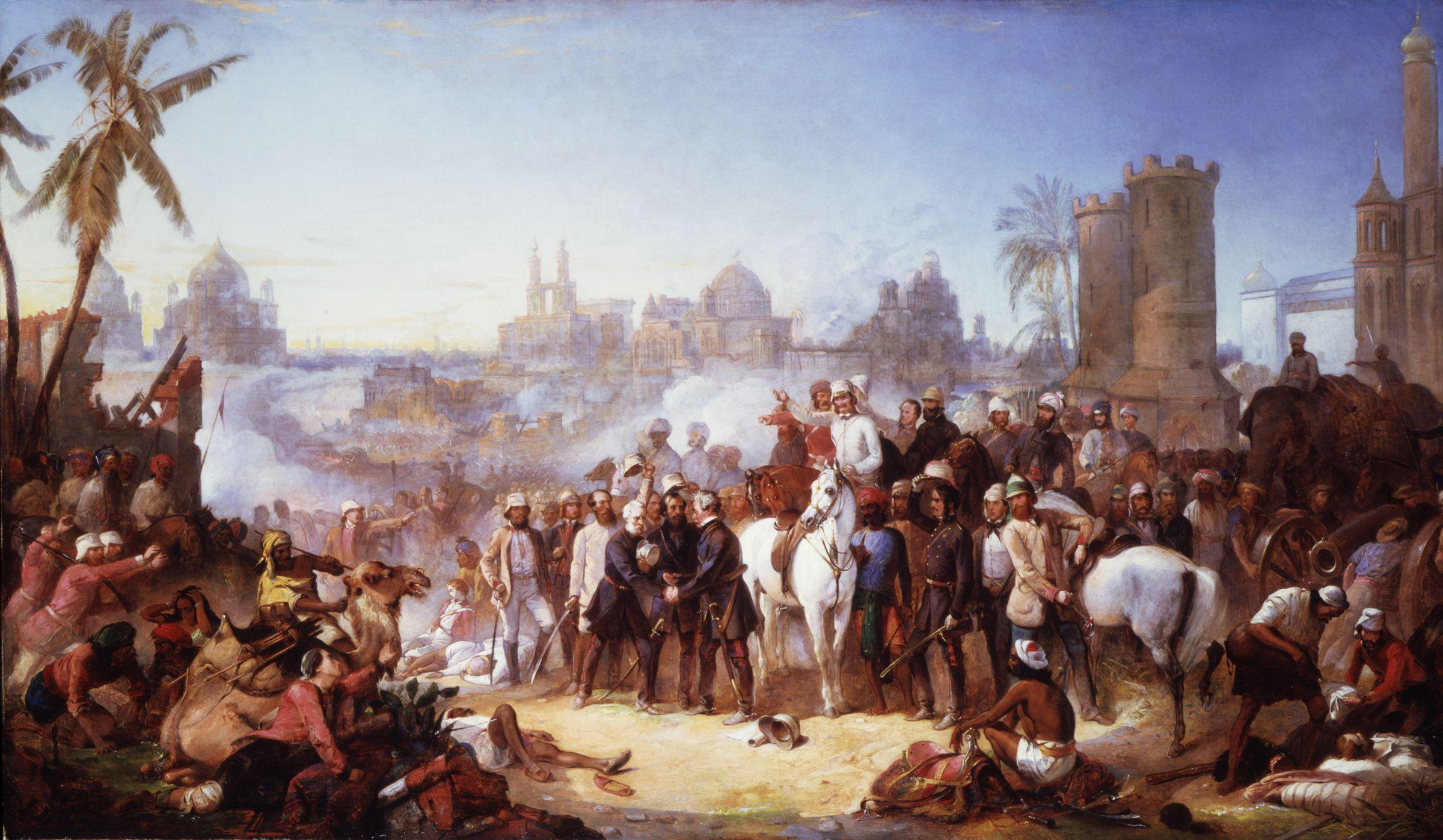The garrison of the Vellore Fort in July 1806 comprised four companies of British infantry from H.M. 69th (South Lincolnshire) Regiment of Foot and three battalions of Madras infantry.
The Indian Rebellion of 1857 refers to a rebellion in India against the rule of the East India Company, that ran from May 1857 to June 1858.
The rebellion began as a mutiny of sepoys of the East India Company's army on 10 May 1857, in the cantonment of the town of Meerut, and soon escalated into other mutinies and civilian rebellions largely in the upper Gangetic plain and central India, with the major hostilities confined to present-day Uttar Pradesh, Bihar, northern Madhya Pradesh, and the Delhi region.
The rebellion posed a considerable threat to East India Company power in that region, and was contained only with the fall of Gwalior on 20 June 1858.
The rebellion is also known as India's First War of Independence, the Great Rebellion, the Indian Rebellion, the Indian Mutiny, the Revolt of 1857, the Rebellion of 1857, the Uprising of 1857, the Sepoy Rebellion, the Indian Insurrection and the Sepoy Mutiny.
The Indian Rebellion of 1857 refers to a rebellion in India against the rule of the East India Company, that ran from May 1857 to June 1858.
The rebellion began as a mutiny of sepoys of the East India Company's army on 10 May 1857, in the cantonment of the town of Meerut, and soon escalated into other mutinies and civilian rebellions largely in the upper Gangetic plain and central India, with the major hostilities confined to present-day Uttar Pradesh, Bihar, northern Madhya Pradesh, and the Delhi region.
The rebellion posed a considerable threat to East India Company power in that region, and was contained only with the fall of Gwalior on 20 June 1858.
The rebellion is also known as India's First War of Independence, the Great Rebellion, the Indian Rebellion, the Indian Mutiny, the Revolt of 1857, the Rebellion of 1857, the Uprising of 1857, the Sepoy Rebellion, the Indian Insurrection and the Sepoy Mutiny.








